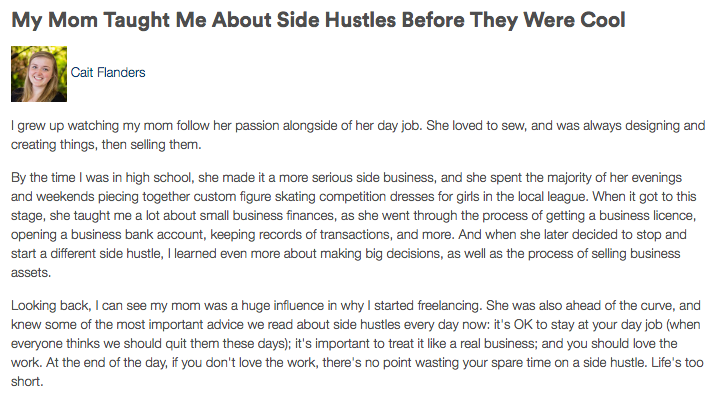Contently Case Story: How Tangerine Streamlines Approvals and Publishes Breaking News. The announcement is huge news; it directly impacts the financial outlook for all Canadians. A financial journalist who get his start in 1995, Watt was among the reporters locked in the House of Commons, filing through the thick report to craft a story for the bank’s readers. For Watts, that story went to the editorial team at Tangerine. “We’re able to have that story filed, go through all of the stages of editing and approval, and publish in less than a couple of hours. “With Contently, we’re able to customize those review chains so we’re sure the right people see it.” In addition to custom review, Tangerine relies on Contently’s editing tool for version control, which keeps a record of changes for every draft and approval. Instead, the site—framed with the brand’s signature orange color scheme—takes you to a series of articles, videos, infographics, and quizzes meant to help users become savvier spenders and more thoughtful savers. “We’ve found that if that new client’s journey through the website includes the consumption of our content, then the enrollment completion rate is 22 percent higher,” Diehl said. In 2016, Tangerine decided to dig deeper into the relationship between content and business results, testing how Forward Thinking impacted brand sentiment. “We found a delta when it came to brand perception and sales—the actual drivers of trust were higher with frequent readers than with readers, and [the same] from readers to non-readers,” Diehl said.
On a brisk winter morning in Ottawa, Ontario, the Canadian federal government held an official budget release to announce how it would spend tax money for the coming year. The announcement is huge news; it directly impacts the financial outlook for all Canadians.
Even though the release is eagerly anticipated, the budget document, which is several hundred pages, isn’t read by most. The public relies on media outlets and financial commentators to provide high-level analysis that helps everyone understand the budget’s impact. However, to control the timing of when and how the information becomes available, the government embargoes reporters together until the late afternoon.
So for seven hours, a group of 300 journalists waited for access to the document. They sat together in a single room—without their phones—taking notes by hand to craft their stories.
Once the embargo was lifted and mobile devices were returned, reporters from Canada’s largest news outlets, such as the National Post and Toronto Star, submitted their takes. But there was also another journalist working on deadline, this one commissioned by an unlikely financial publisher: Tangerine, Canada’s leading digital bank.
Breaking news without breaking the bank
To cover the Department of Finance’s announcement, Tangerine turned to one of its trusted freelance reporters: Doug Watt. A financial journalist who get his start in 1995, Watt was among the reporters locked in the House of Commons, filing through the thick report to craft a story for the bank’s readers.
“Despite the initial stress and panic, there are so many angles you can choose from,” Watts said. “You just have to figure out what’s right for your audience.” By the time WiFi was restored and electronics were returned, the writers rushed to file their stories. For Watts, that story went to the editorial team at Tangerine.
On the other end was Darin Diehl, director of content and shared services, who described on-the-ground reporting as a great way for Tangerine to “be more intentional” about its editorial content.
“There are occasions, like this one, when we want to react in real time to breaking news,” Diehl explained. “The difficulty is as a financial services company, we’re in a highly regulated industry, and we have multiple stages of review. Whether it’s an article, infographic, a video, or a quiz—we can’t skip those stages.”
While traditional outlets can post news immediately, Tangerine can’t be that fast. To combat the lengthy approval process, Diehl and his team had to devise a plan. “What we do is get the buy-in from all of the legal and compliance folks and anyone on our marketing team that’s part of the collateral review process,” Diehl said. “People are warned in advance.”
Once the concept gets approved and the necessary approvers book time for material review on their calendars, the editorial team moves swiftly.
“We’re able to customize those review chains so we’re sure the right people see it.”
“With news reporting, the workday goes a little bit longer than the normal nine-to-five, but people are prepared for that,” Diehl…

COMMENTS